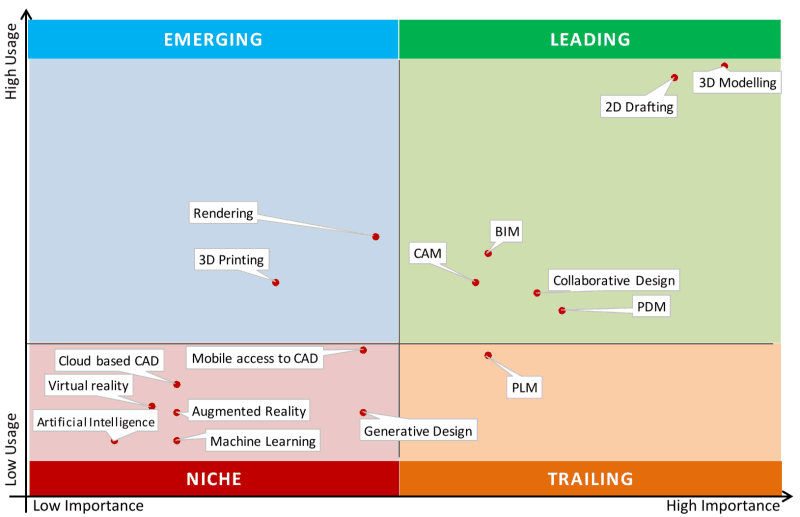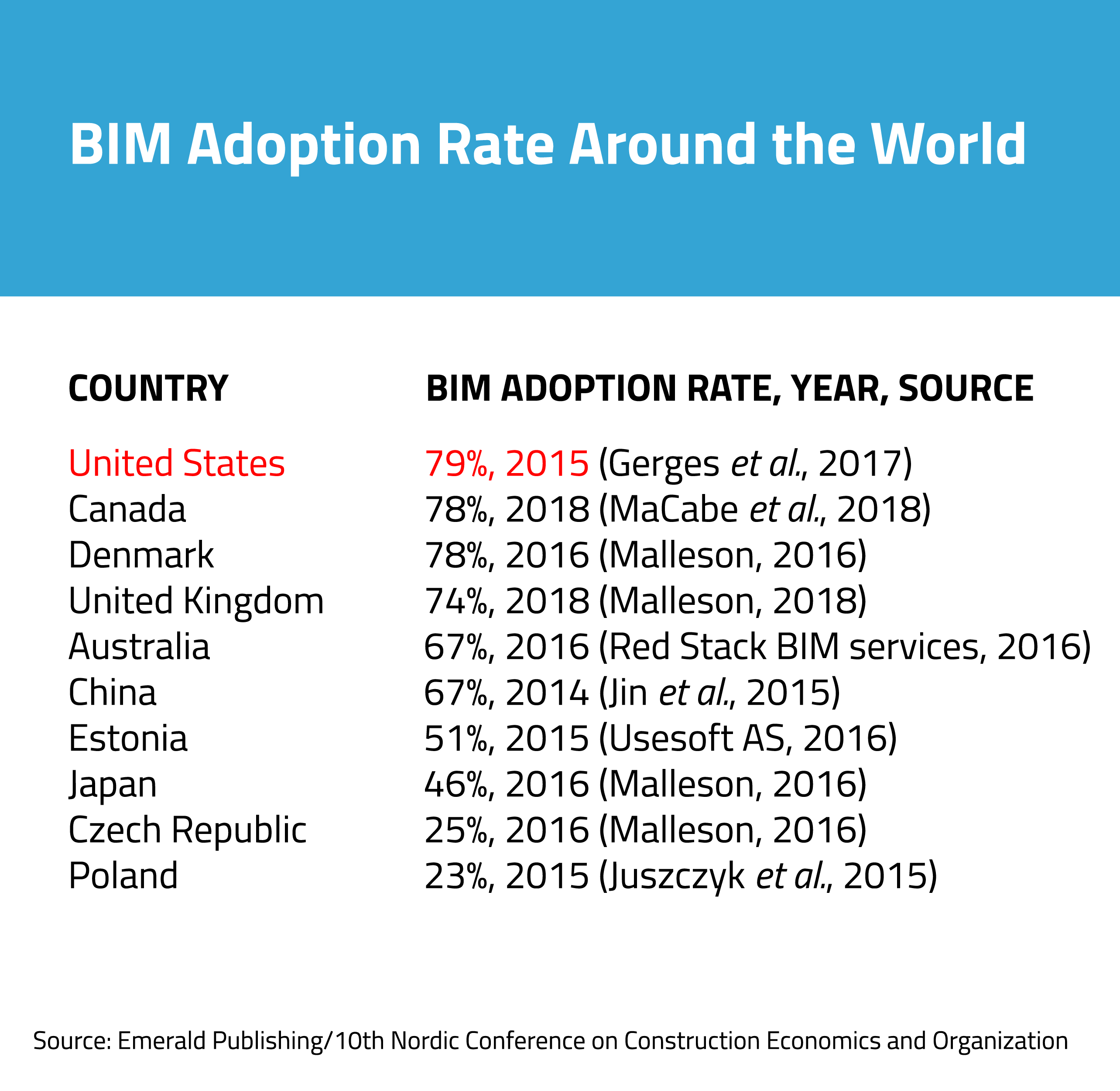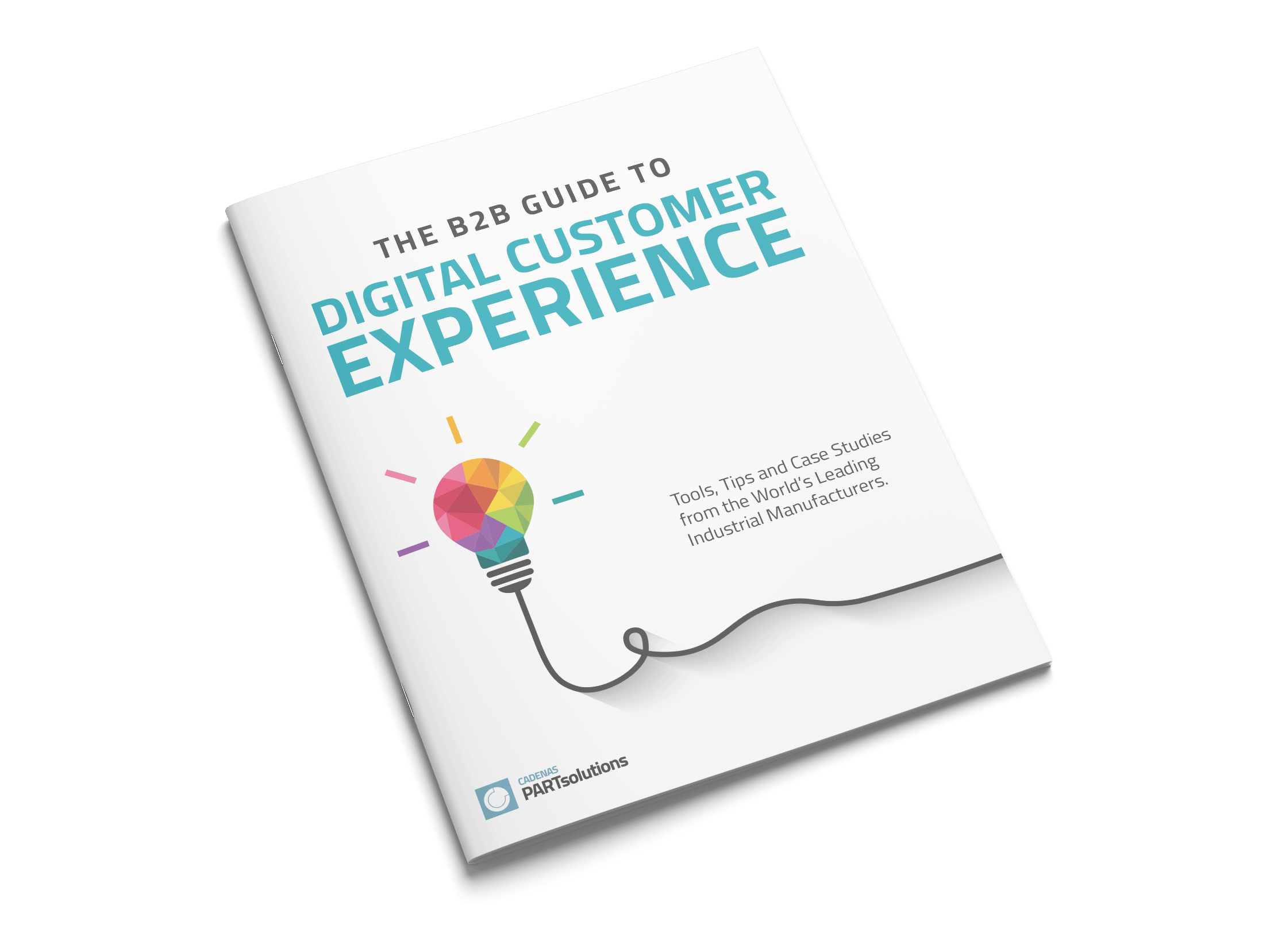Providing BIM Objects
How to sell more products by providing BIM objects directly to customers
Architectural product manufacturers know that providing BIM objects is a business necessity. Ten years ago, it was enough to provide a neutral file to customers who called or emailed a request for product samples. Not anymore.
Today’s architectural designers and buyers expect on-demand product data, instant BIM downloads in their native format, and high-quality product images — all at the click of a button.
Are you meeting these heightened expectations? How are you guaranteeing your company can provide BIM object downloads to customers today and five years from now?
This page covers everything architectural marketers need to know about providing BIM objects to customers.
Jump to the Chapter You Need:
1. What Is BIM?
2. What Are BIM Objects?
3. Why Deliver BIM Objects to Architects?
4. How To Provide BIM Objects Online
-
Creating High-quality BIM Objects
-
Who on an Architectural Team Chooses BIM Objects?
-
What Do Architects Look For in BIM Objects?
-
Implementing BIM Objects Into Your Company
-
Which BIM Formats Should I Provide?
-
Where Should I Offer BIM Objects?
-
Can I Offer CAD and BIM Objects at the Same Time?
5. Getting the Most From BIM Objects
6. Take the Next Step Toward Providing BIM Objects
PART 1
What Is BIM?
Building Information Modeling, or BIM, is a design process that involves creating virtual models of structures and spaces, usually in 3D, for architectural projects. BIM facilitates collaboration between team members during a building’s lifecycle — from planning to construction to renovation — by providing all data and models in a single space. Think Google Docs meets “The Sims.” BIM increases project accuracy and efficiency, saving architects and project stakeholders serious money and letting clients step into a space before construction even begins.
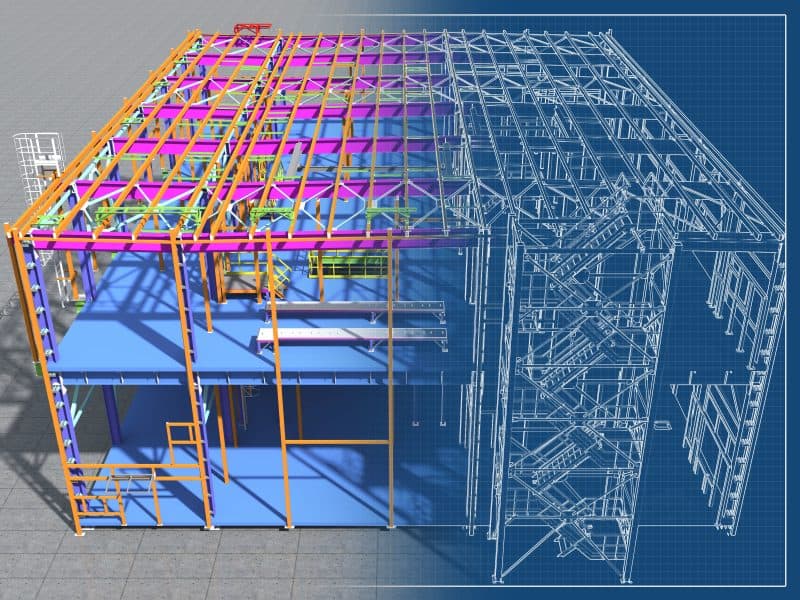
Unlike 3D CAD, BIM looks deeper into the relationships between building components to search for possible conflicts. For example, when using a BIM model, designers can see if a window is too large for a structure. BIM also lets architects and other stakeholders like engineers and contractors collaborate virtually. Each team member can access the same data and the same model simultaneously.
BIM models also store more accurate data than past design models and methods, which means less human error in calculations and less time making adjustments. A door frame that isn’t up to code or doesn’t please a client is easier to fix on a computer than at a physical job site where builders have already spent time and money.
Architect Paul Duffy has 40 years of design experience and started using BIM about 10 years ago. He says that BIM has drastically shortened design time:
“With BIM, it’s a much quicker process,” Duffy said. “People could shrink design time by weeks, if not months. I knew a guy who, in three weeks, brought photorealistic images of what a building would take. That used to take months.”
“[With BIM] people could shrink design time by weeks, if not months.”
– Paul Duffy, Architect for 40+ years
PART 2
What Are BIM Objects?
BIM models can contain individual components (e.g., structural pieces) called BIM objects that make up the entire 3D model. Each BIM object has geometry and data that lets designers see how it will interact with the real world. For example, suppose an architect or engineer needs a bicycle rack for their design. They can download a 3D model of the bicycle rack (the BIM object) from a bike rack manufacturer’s website and place it into their BIM model to see how the rack’s size and function will work with the overall structure.
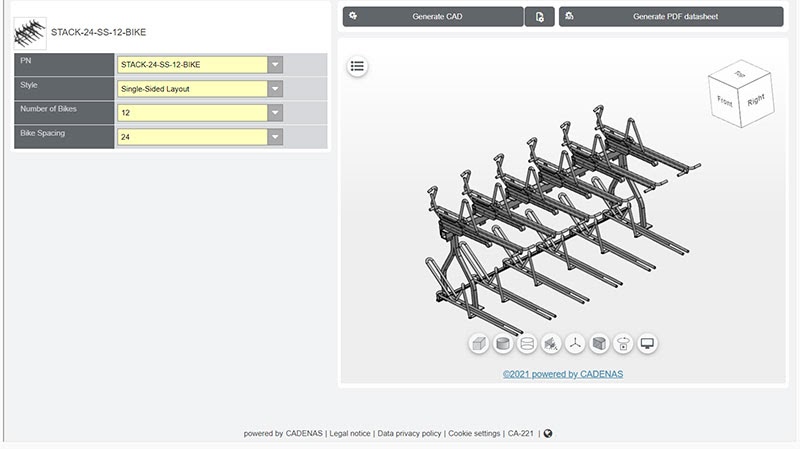
A specific BIM object of a Saris Infrastructure bicycle rack, shown in a configurator. An architect or designer can download this BIM object from Saris’ website and place it into their BIM model.
BIM objects can be generic or specific. During the early design stages, architects and designers use generic BIM objects to act as placeholders within BIM models. Eventually, they put in specific BIM objects to represent particular products.
For instance, if an architect needs a bike rack but isn’t ready to choose an actual manufacturer model, they can place a generic BIM object of a bike rack into the BIM model as a placeholder before they download a manufacturer’s specific bike rack model.
Specific BIM objects must contain detailed information in order to accurately represent how the item will interact with the real world. This information usually includes:
- The item’s geometry and dimensions
- Materials in the item
- The part number and other specific identifiers that make it easy to locate and purchase the item online
- Detection zones that enable the item to behave as it would in the real world
- Manufacturer information
BIM objects can also be classified as component objects or layered objects. Component objects have a fixed shape (e.g., a window), while layered objects can change shape (e.g., walls).
Where Can I Find BIM Objects?
Designers can make their own BIM objects or download them from external sources.
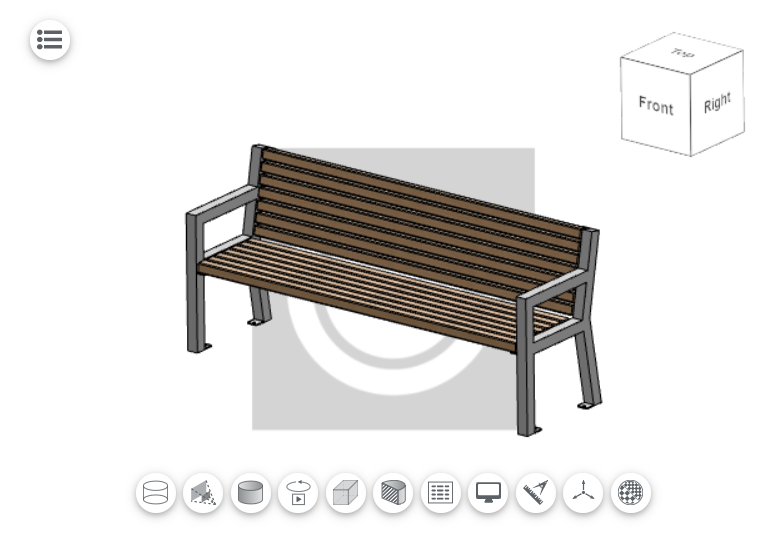
A BIM object of a NUSSER Stadtmöbel bench, shown in a configurator. An architect or designer can download this BIM object from NUSSER’s website and place it into their BIM model.
Searching external sources for BIM objects is sometimes a tedious process, similar to searching for CAD models, because designers often must look through dense online spec sheets to find what they need.
This is why when architectural product manufacturers have a BIM object library readily available on their website or in public catalogs, they make designers’ jobs easier by letting them quickly download the item they need and return to their project.
PART 3
Why Deliver BIM Objects to Architects?
“The vast majority of information users agree that they need manufacturers to provide them with BIM/digital objects.”
– NBS Digital Construction Report 2021 (survey of 906 built environment professionals)
Benefits of Implementing BIM Objects
BIM objects are your ultimate marketing tool.
Today’s manufacturing and architectural landscape is all about self-serve. Rather than contacting a sales department for product info, today’s architects and designers prefer to do independent research online. That means they need product data readily available on manufacturer websites.
Manufacturers often believe that providing dimensioned 2D drawings or neutral BIM files on their website is sufficient for their customers. If not, customers would reach out to let them know they wanted something else.
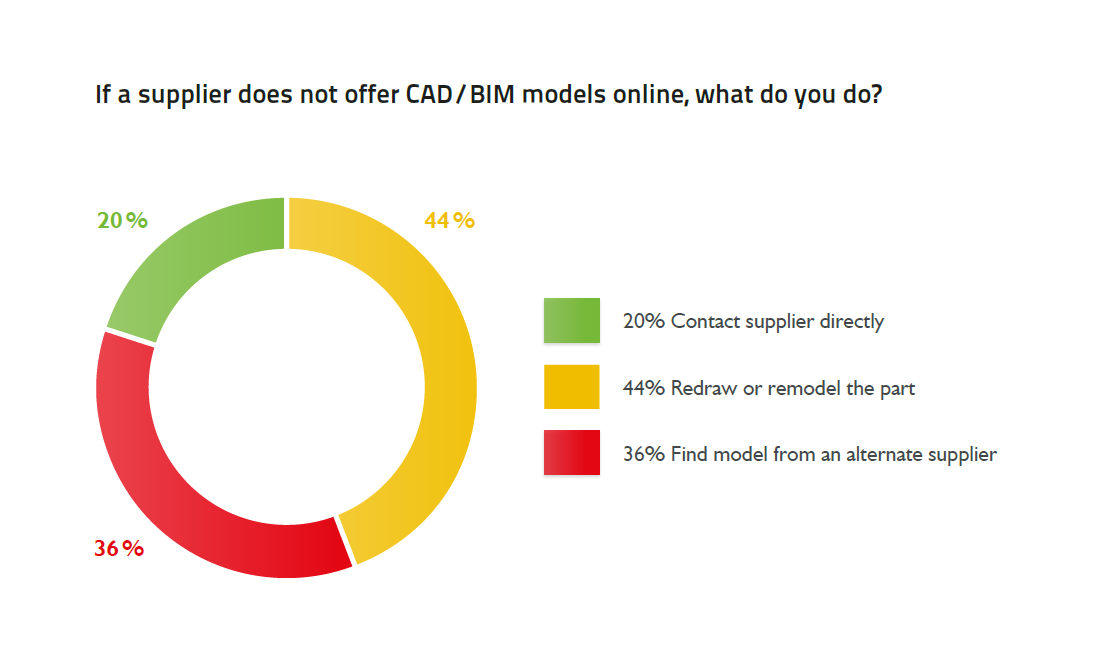
80 percent of designers bounce before contacting a supplier with limited CAD or BIM data. The more product information you make available on your website, the more likely customers will be to stay with you. Source: The 2021 Industrial Sales and Marketing Report
As a manufacturer, the more product information you make available on your website, the better the online experience is for your customers, and the more likely they’ll be to stay with you.
The most effective way to provide this product-specific data to your customers is by embedding a BIM catalog and product configurator with 3D previews onto your website. Architects and designers can easily navigate through your product library, see necessary metadata about products, and instantly visualize products in 3D.
BIM expert Robert Weygant says that BIM is a golden marketing opportunity for manufacturers:
“BIM is arguably the best opportunity for manufacturers to cater to a wide range of prospective customers with the most robust content,” Weygant said. “Even when it’s not used as ‘BIM,’ the 3D content and attached product data embodies what content marketing could be. Configurable, interactive 3D visual displays coupled with copious amounts of relevant information, bundled up in a neat package that’s understood by influencers and customers alike.”
Most importantly, when customers download these BIM objects from your website, you can use the downloads to capture qualified leads and segment those leads based on which BIM objects the prospects specified. Doing this enables you to send prospects relevant marketing emails and gives your sales team a reason to reach out.
“BIM is arguably the best opportunity for manufacturers to cater to a wide range of prospective customers with the most robust content.”
– Robert Weygant, BIM thought leader and expert
Industry Adoption of BIM Models and BIM Objects
The UN predicts that the world’s population will be 9.7 billion by 2050. In order to keep up with the growing population, the architecture, engineering, and construction industry needs to learn more efficient design and build methods.
According to a 2020 report by The American Institute of Architects (AIA), in 2019, “the overall share of firms using BIM software in some capacity” rose to 58 percent, and 100 percent of large firms in the survey reported using BIM (p. 30).
The AIA also reported that 74 percent of “firms reported starting to use BIM software to share models with consultants,” (P. 31).
In Business Advantage’s Worldwide CAD Trends 2018/19 report, 92 percent of all engineering and design respondents said they currently use 3D models, and researchers expect the adoption rate to climb in the next five years.
Additionally, according to the 2021 NBS Digital Construction Report, a survey of 906 built environment professionals, “among those who require information about products, 81% say they need manufacturers to provide BIM files/digital objects,” and “the vast majority of information users agree that they need manufacturers to provide them with BIM/digital objects.”
Bottom line: If you aren’t providing BIM objects to customers, you are losing business to those that do.
Take the Next Step Toward Providing BIM Objects.
“Manufacturers’ input in terms of product information as well as creating and supplying BIM objects is very crucial to digital transformation.”
– Architectural Technician, quoted in the NBS Digital Construction Report 2021 (survey of 906 built environment professionals)
BIM has become so important to the architectural industry that governments have implemented recommendations and mandates. In 2003, the United States launched the National 3D-4D-BIM Program to strategize implementing BIM for major public projects. The European Union has also recommended BIM for public projects since 2014, and several European countries have implemented individual BIM mandates.
Take the Next Step Toward Providing BIM Objects.
PART 4
How To Provide BIM Objects Online
Creating High-quality BIM Objects
High-quality BIM objects have the following:
- Good visuals: BIM objects must accurately represent their real-world counterparts so the designer and their clients can understand how the finished project will appear.
- Embedded information: Once a designer is ready to purchase your tangible product for their project, they won’t want to comb through their internet history for the item’s information. Having data like the part number and manufacturer info embedded into your BIM product file helps the designer quickly purchase the products they know work in their design. It also helps you, the manufacturer, ensure sales. Designers will be more inclined to choose the part with embedded information over the part with no information that forces them to go back and manually search for data.
- Modeling parameters: The BIM product file should have parameters and measurements that ensure it follows the same rules as the real world, even as the designer adjusts the model. For example, a BIM object for a window will have parameters that tell the object to change the size of the window frame as the designer changes the size of the window. Manufacturers can also embed pre-defined configurations into their BIM objects, such as the specific dimensions available with each product.
Here’s an example of a high-quality BIM object available for download online by Saris Infrastructure:
Who on an Architectural Team Chooses BIM Objects?
Architect Paul Duffy says that it depends on the project:
“If you have a contractor right away, they’ll steer you to certain ones,” Duffy said. “Sometimes the architect works on their own, and they may solicit advice. There are also engineers involved that have opinions on what they like. The BIM object needs to look nice aesthetically and meet the budget.”
What Do Architects Look For in BIM Objects?
When Paul Duffy searches for BIM objects and CAD models, he says what he looks for depends on how the family is built. The more adjustable a BIM object, the better (i.e., features, finishes, opening dimensions, etc.). Sometimes when he drops a BIM download into a BIM model, the manufacturer programmed the object to do only two things, but he needs it to do five things. Ideally, he could modify a BIM object after placing it in the model.
Nonetheless, Duffy says that sometimes model parameters are still beneficial to BIM objects. If designers want unusual, proprietary dimensions for an object, manufacturers on the market may have trouble creating those unique items.
Whether you choose to provide highly customizable BIM downloads or ones with tight constraints depends on your company and how willing you are to build custom products.
Implementing BIM Objects Into Your Company
You can implement a BIM library into your website the same way architectural and design firms implement the BIM process into their own companies: in small increments. For example, contractors often start their BIM experimentation by just using BIM to visualize their projects, or they start by implementing collision detection and avoidance. It’s also common to initially use BIM for construction planning, logistics, and mock-ups.
Here are steps design firms must complete when implementing BIM into their design process. Architectural product manufacturers can also use these principles when introducing BIM objects:
Get Support From the Whole Company
Implementing an online BIM catalog is not a one-department project. It breaks down silos across your whole company by fostering collaboration, so introdcuting them will significantly change your entire organization. Therefore, you must have support from every part of the company, including leadership.
Make a Plan
BIM requires organizational buy-in from your team and company, so forcing it into the middle of an ongoing project is not ideal.
To make a smooth transition into using a BIM catalog, you’ll need a well-articulated plan. Meet with leadership to discuss the goals you want to achieve with BIM objects and what the transition process will look like. When planning, keep every department in mind, and consider including representatives from each department in your planning meetings.
You may have to educate executive leadership on what an online BIM catalog is and how it can benefit your company. Make the monetary benefits clear with statistics and real examples, and prepare answers to likely questions.
Complete a Pilot Project
You can conduct a hypothetical project, complete a new client project, or repeat a past project and compare results.
Whatever pilot project you use, document and review your findings. What worked and what didn’t? Share the positive results with leadership.
Invest in Training
Set up your team for success by making sure they know how the new tech works both internally and externally.
Prepare Data
When implementing BIM objects, you’ll need to arrange where and how you’ll transfer data between team members. With BIM, interoperability is critical. Interoperability is the ability of computer systems or software to exchange and utilize information. It enables engineering data to pass from the original design all the way through the product life cycle.
BIM requires a lot of data storage and transfer, so it’s important to have interoperability among team members and to make sure that all of your project data is in formats that every team member can read.
To avoid having multiple copies of the same file in different locations, create a common data environment: a central location for team members to share and store the architectural/construction project information, AKA a “single source of truth.”
Once you’ve decided where and how you’ll transfer and store project data, you can start to gather your product data for your public BIM library. Provide product data that will best fit your customer and prospect needs. What will your typical customer need for their BIM files? For example, are your customers architects who need specific dimensions? Maybe they’re contractors who need building materials. Walk in your users’ shoes, and if possible, ask them directly what data they need.
Create BIM Objects
When creating the actual BIM objects, you’ll typically start with original documents such as 2D drawings (digital or paper) or with 3D scans of your real products. You’ll also need to add parametric data and info from your product data sheets. The parametric data lets users configure your product within specific parameters like size, material, and product-specific attributes. These constraints standardize a scalable framework for all possible product attribute combinations.
Which BIM Formats Should I Provide?
The BIM formats you provide for your online BIM files depends on your industry and customers. As BIM expert Robert Weygant said, “Just as providing a STEP file and one native CAD format isn’t good enough for your engineering audience, your BIM audience requires multiple options for native BIM downloads of your products.”
So which formats should you provide?
“There are several BIM software packages on the market,” Weygant said. “Which software is most important to your brand depends on the market you are in and the type of projects that you sell into (Commercial, Residential, Industrial, etc.). Contrary to popular belief, not all architects use Revit.”
When trying to decide, Weygant says you should ask yourself:
- Do you manufacture for the residential, commercial or industrial market?
- Do you sell internationally?
- Who is your target audience: architects, mechanical engineers, civil engineers, contractors or structural engineers?
You can also provide BIM files in a neutral format like IFC.
“Contrary to popular belief, not all architects use Revit.”
– Robert Weygant, BIM thought leader and expert
Louie Andre, a BIM software expert with the B2B and SaaS review site FinancesOnline, ranked the best BIM software of 2022:
- Autodesk BIM 360
- Trimble Connect (Formerly Tekla BIMsight)
- Archicad
- Navisworks
- Revit
- Building Design for Fabrication
- BIMobject
- BIMx
- Procore
- Bentley’s OpenBuildings Designer (Formerly AECOsim Building Designer)
Here are other popular formats, which vary in popularity depending on the industry:
Where Should I Offer BIM Objects?
Once you have created your BIM objects, where should you make them available for designers to download?
The best way for designers to connect with you is through a BIM catalog on your website. According to a study from The American Institute of Architects, “websites are the primary way architects engage with manufacturers and are their preferred means of collecting product information.”
You can also provide BIM objects on an open exchange site like BIMcatalogs.net.
Can I Offer CAD and BIM Objects at the Same Time?
Yes, and if you already provide CAD models on your website and want to provide both CAD and BIM, you won’t necessarily have to duplicate everything in order to have both. Instead, create a native build.
A native build is created with a “master” model and uses your product rules and parameters. The master model and parameters power a configurator that lives on your website. When designers need a customized CAD file or BIM object, they can quickly use sliders and dropdowns to customize your products to their specifications.
Additionally, when your product has updates, you can edit the master file rather than each individual CAD model or BIM object.
PART 5
Getting the Most From BIM Objects
Implementing a BIM library is a long, sometimes costly endeavor. You need to make sure you’re getting the most out of your investment.
BIM users typically prefer BIM objects with a low level of detail and simple layout, unlike CAD users who prefer a lot of detail.
BIM objects are particularly beneficial in complex projects with a lot of technical infrastructures. For example, an architect designing an oil rig with 375 lights doesn’t necessarily want or need a lot of detail for each BIM object of the light in the model; they just need the data and simplified geometry. Architects can request the level of detail they want for their BIM file download.
But if your customers just want low-detail objects, why should you provide BIM objects at all? Couldn’t designers just draw a box in their BIM model and say, “This is where a door will go”? While designers could technically create a simple box or download a generic file for their design, BIM objects are much more beneficial in the long run because of what’s on the inside.
Even low-detail BIM objects can carry critical information called metadata, or data within data. Metadata tells us information about data and gives context by summarizing it. Once downloaded and in the model, a BIM object can contain product data like height, width, depth, weight, manufacturer info, etc. 
For example, let’s say an architect is searching online for a door. They find your manufacturing website, download a generic file of your product, and put it into their BIM model. Without metadata, once the architect downloads the generic file and puts it into their BIM model, they lose all information about who manufactures the product. No part number, no manufacturer name, and no information on how to purchase the part. For you, the manufacturer, this means fewer sales.
When you offer BIM objects online, you ensure that your company’s data remains in the BIM file when customers download it, and you make the purchasing process easy for the customer.
Common Challenges With BIM Objects
Security Concerns
Some manufacturers fear that providing a public BIM catalog puts their company data at risk. They worry that by making their product data available to anyone, thieves can counterfeit their intellectual property. They’re right to be concerned. Product piracy is a significant problem for many manufacturers, and when they aren’t doing enough to protect their intellectual property, criminals see the potential profits.
Many manufacturers try to protect themselves by refusing to offer prospects digital product data or by limiting their offers to generic 3D models. This method is a very overcautious approach, as designers need to see specifications before they are willing to integrate components into their designs.
According to a study by The American Institute of Architects, “many [manufacturer] websites are not built from the architect’s perspective; instead they are built from the manufacturer’s perspective with…obstacles that protect the manufacturer’s information to the detriment of the online experience…A successful digital engagement strategy needs to have an ‘architect-friendly’ website at its core.”
Another study found that if native CAD/BIM data is not available online, 72 percent of engineers and architects will choose another supplier. When you offer little to no digital product data to prospects, you’re preventing your company from reaching its full sales potential.
So how can you provide the best online experience and still protect your IP? Offering a BIM library online is only a risk when all of your manufacturing data is included. This confidential data includes feature control symbols and tolerance levels, and you shouldn’t include it in the BIM files you share with the general public.
A better approach is to offer “sales” models:
- “Manufacturing” models include all intellectual property and make it easy for competitors to copy.
- “Contour” envelope models don’t contain intelligent information and are useless for today’s modern processes.
- “Sales” models contain all the necessary information without jeopardizing intellectual property.
“A successful digital engagement strategy needs to have an ‘architect-friendly’ website at its core.”
– The American Institute of Architects
Cost
The cost of implementing BIM objects varies by industry and company, but when deciding on whether or not to implement BIM objects, you should consider the cost. Implementing BIM objects means you must also introduce new:
- Software
- Hardware
- Staff
- Training
At the same time, consider the revenue you’ll earn if you implement a public BIM catalog:
- 65% of engineers and architects see native CAD/BIM models as the #1 criteria for part selection
- 82% of CAD/BIM downloads convert into physical product sales
- 20.9 physical products are purchased on average per CAD/BIM download
PART 6
Take the Next Step Toward Providing BIM Objects
Now that we’ve covered everything there is to know about providing BIM objects to customers, you, the architectural marketer, can build or revise your content marketing strategy around a public BIM library.
Take the next step toward increasing your qualified marketing leads and sales with an eCATALOGsolutions BIM object integration for your website. Make it easy for your customers to select and configure product options on-demand.
Schedule a demo with our eCATALOGsolutions experts today!
Not ready to talk to a person? Download our ebook to learn how manufacturers are building a remarkable digital customer experience with 3D product downloads and configurators.
Kelly Obbie
Latest posts by Kelly Obbie (see all)
- The Weirdest Fighting Robots We’ve Seen at NHRL - April 19, 2024
- Get To Know Your CADENAS PARTsolutions Team: Jay Hopper - March 15, 2024
- Get to Know Your CADENAS PARTsolutions Team: Ed Rinaldi - February 15, 2024
